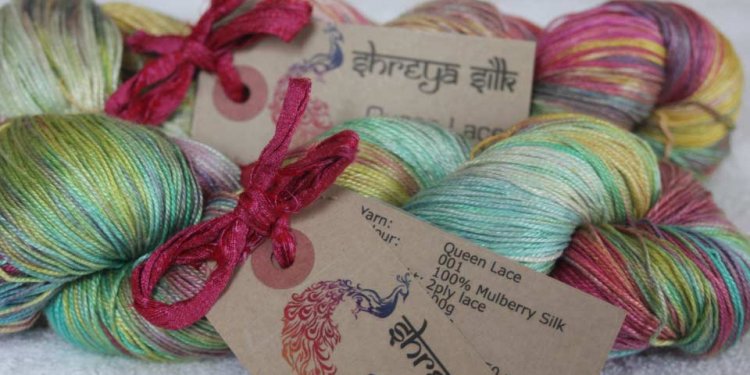
Silk Knitting
About Silk and Silk Yarn
Silk yarns and fibres are unravelled from a cocoon, the metamorphosis chamber of the silkworm. This Bombyx mori caterpillar hatches in warm spring temperatures from an egg the size of a poppy seed. After 30 days of continually eating mulberry leaves, the silkworm is the size of a full piece of writing chalk, and the mulberry leaves have been transformed into a semi-liquid protein called fibroin.
When the silkworm's biological time clock triggers the cocoon spinning process, the fibroin proceeds to the spinneret, an orifice in the worm's head. It is coated with a second gummy protein called sericin, The silkworm rotates its body 200, 000 times in three days extruding through the spinneret one continuous strand of silk the length of 12 football fields. The silk adheres to itself, forming the cocoon.
Throughout Asia, farmers march to markets with baskets and bags full of 'green' cocoons atop their heads. Here buyers fiercely bid on the crops. The cocoon is in the 'green' state until the transforming pupa inside is stifled to prevent the maturing of the pupa into a moth. Cocoon gathering, transporting, selling, and stifling must be done within the two week metamorphosis period. If the pupa is allowed to mature, the emerging moth emits a brown juice which disintegrates the silk and forms a hole for the moth to escape, breaking the fibre into short pieces that cannot be reeled.
FURTHER INFORMATION ABOUT SILK YARNS
Factories, cottage industries, and individuals all unravel cocoons using the same basic principles. Sorting through the cocoons and unleashing the silk produces three grades of yarn: reeled, spun, and noil.
REELED YARN
Reeled, or filament silk is the highest quality yarn and is very white and shiny. First the cocoons are inspected and sorted, as only those with a perfect shape can be used for the reeling procedure. Cocoons are soaked in warm water to soften the gummy sericin. The silken strand from a single cocoon is too fine to use alone, so individual filaments of 6-20 cocoons are unravelled at the same time, travelling through a very small eye. The softened sericin dries, hardens and binds the strands together to become one thread the size of a human hair. The majority of reeled silks supply large industrial...

















